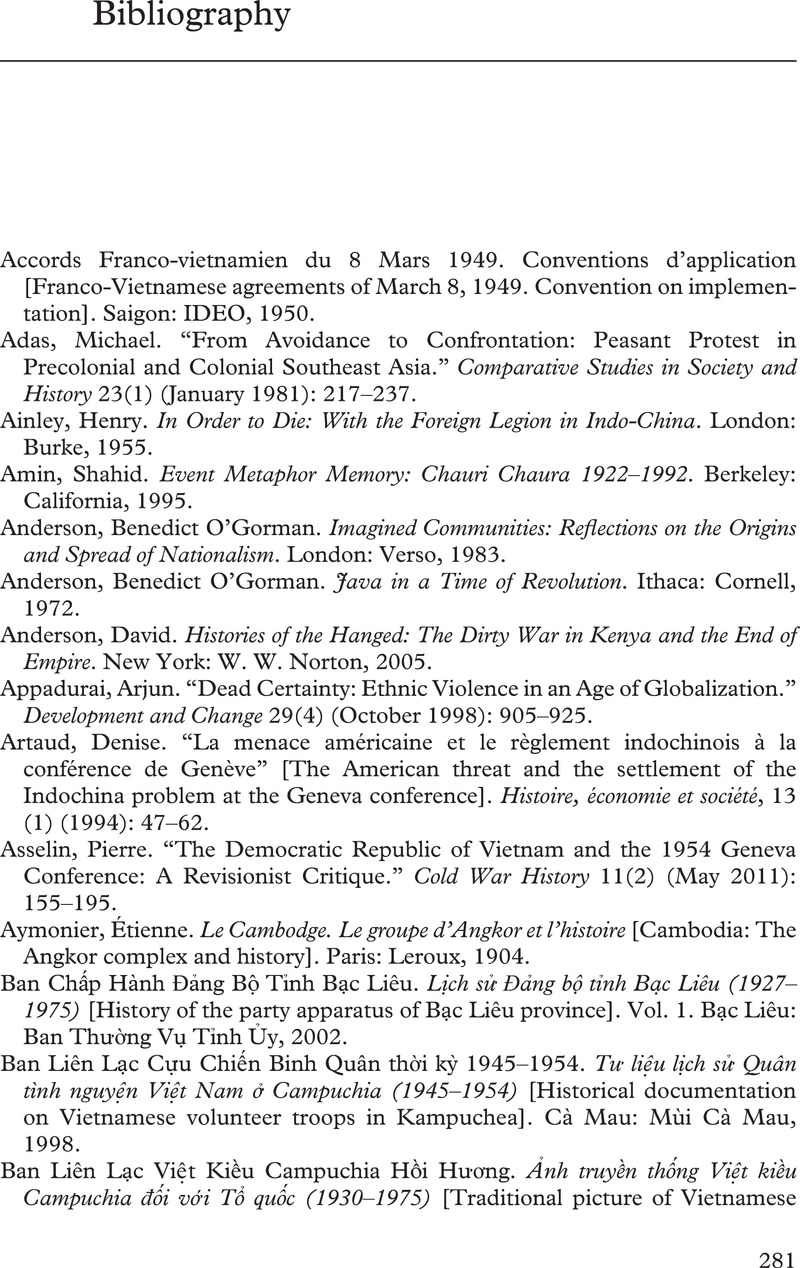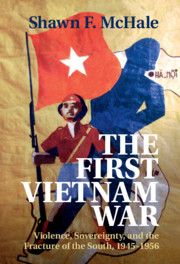Book contents
- The First Vietnam War
- The First Vietnam War
- Copyright page
- Contents
- Figures
- Tables
- Acknowledgments
- Abbreviations
- Introduction: Sovereignty, Violence, and Institutional Collapse at the Edge of France’s Empire
- Part I Fracture, 1945–1947
- Part II Disassemblage/Reassemblage, 1947–1953
- Part III Endgame, 1953–1956
- Bibliography
- Index
- References
Bibliography
Published online by Cambridge University Press: 17 August 2021
- The First Vietnam War
- The First Vietnam War
- Copyright page
- Contents
- Figures
- Tables
- Acknowledgments
- Abbreviations
- Introduction: Sovereignty, Violence, and Institutional Collapse at the Edge of France’s Empire
- Part I Fracture, 1945–1947
- Part II Disassemblage/Reassemblage, 1947–1953
- Part III Endgame, 1953–1956
- Bibliography
- Index
- References
Summary

- Type
- Chapter
- Information
- The First Vietnam WarViolence, Sovereignty, and the Fracture of the South, 1945–1956, pp. 281 - 299Publisher: Cambridge University PressPrint publication year: 2021



